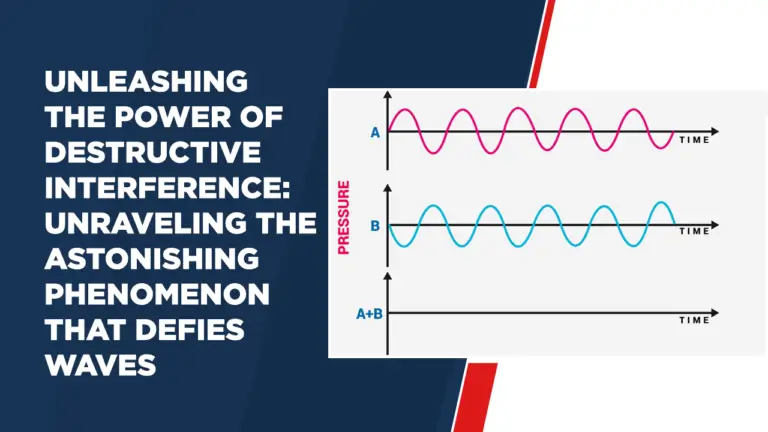Unleashing the Power of Destructive Interference: Unraveling the Astonishing Phenomenon That Defies Waves
Introduction
The field of waves lies in an interesting but counterintuitive phenomenon called destructive interference, which challenges our current understanding of wave behavior and has been used extensively in many fields from physics to engineering and beyond. . By further investigating its complex mechanisms we may discover its hidden ability to manipulate wave patterns and advance technological capabilities.
What Is Destructive Interference?
Destructive interference occurs when two or more waves collide and combine in such a way that their combined energy cancels each other out or significantly reduces its amplitude, as opposed to constructive interference where waves produce larger amplitudes. To strengthen each other. Destructive interference negates the natural tendency of waves to amplify each other.
Phase Difference for Destructive Interference
Phase difference lies at the root of destructive interference. Waves can be classified based on both their amplitude and phase; Respectively, it shows where on their cycle each moment occurs. When two waves with the same frequency and amplitude are 180 degrees out of phase to each other, their amplitudes cancel out, creating a temporary zero-amplitude point.
Path Difference for Destructive Interference
Path difference is also an integral part of destructive interference, as waves traveling different distances to reach a point may experience phase shifts due to this unequal travel distance; When combined with the phase difference principle, this phase change can cause destructive interference; The path difference for destructive interference is equal to half the wavelength.
Formula for Destructive Interference Analysis
Calculating path differences due to destructive interference requires following formula:
Path Difference = (n + 0.5)*l
Where n is an integer representing the number of half wavelength differences; whilst l is the wavelength.
Harnessing the Power
Light is susceptible to destructive interference which leads to decreased visibility
One of the most interesting applications of destructive interference lies in optics and light. Thin-film interference – as seen in soap bubbles, oil layers, and anti-reflective coatings – relies on destructive interference to selectively cancel certain wavelengths of light resulting in less noise and fewer reflections.
The transformative potential of disruptive interventions has far-reaching effects across many disciplines. Acousticians use this phenomenon for noise cancellation techniques that create quieter environments by employing out-of-phase sound waves to neutralize unwanted noise; And telecommunications professionals use destructive interference principles to increase signal clarity and reduce signal degradation in fiber optic communications systems.
Conclusion
Destructive interference, an intriguing phenomenon that upends our assumptions about wave behavior, holds great promise to transform technology and deepen our knowledge of nature. By uncovering its secrets and taking advantage of its applications, destructive interference provides us with opportunities for innovation across industries from optics to engineering.




